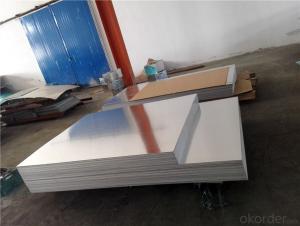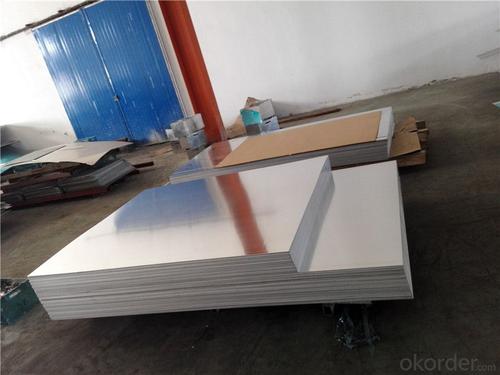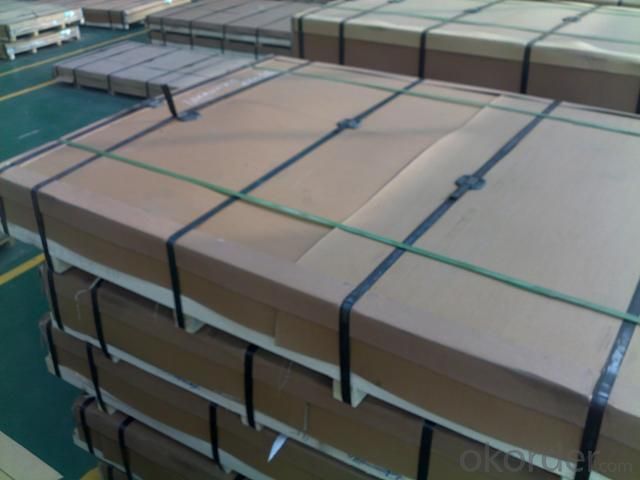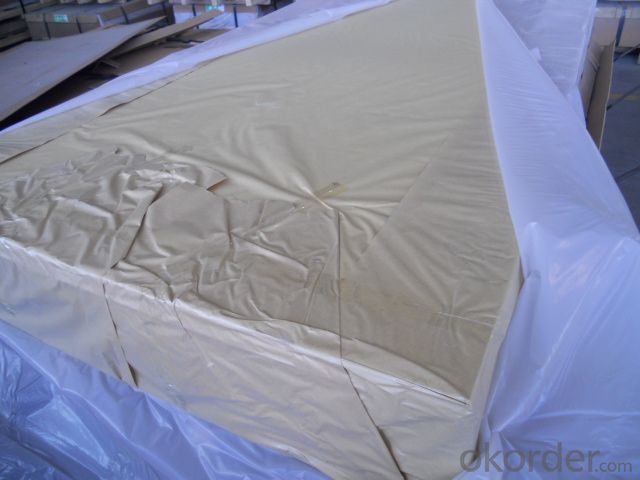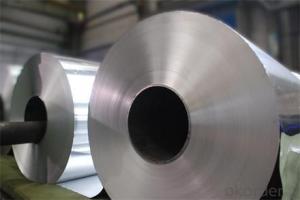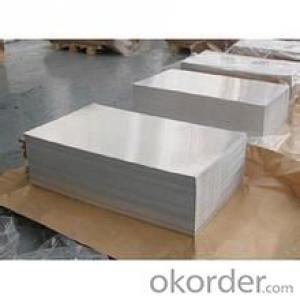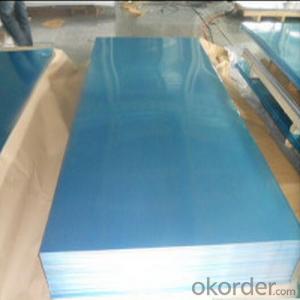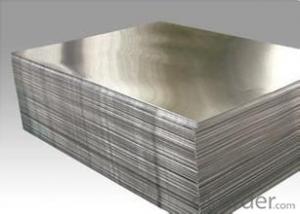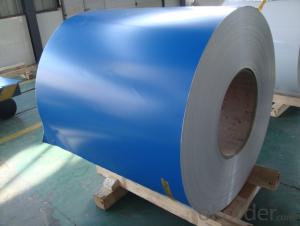Aluminum Sheets Wholesale for Construction with High Quality
- Loading Port:
- Shanghai
- Payment Terms:
- TT or LC
- Min Order Qty:
- 5 m.t.
- Supply Capability:
- 100000 m.t./month
OKorder Service Pledge
OKorder Financial Service
You Might Also Like
1.Structure of Aluminiu Sheets for Construciton with High Quality
Our aluminum sheets for construction between 0.2 mm and 500mm in thickness and has a wide variety of uses in the construction industry including aluminium siding and roofing. Sheet is also used widely in construction, decoration, transport applications and other various industrial filed, such as automobile body panels, airframes, curtain walls and the hulls of boats etc.
2.Main Features of Aluminiu Sheets for Construciton with High Quality
•High intensity
•Easy to be processed and shaped
•Weather resistance
•Anti-pollution & environment protection
3. Aluminiu Sheets for Construciton with High Quality Images
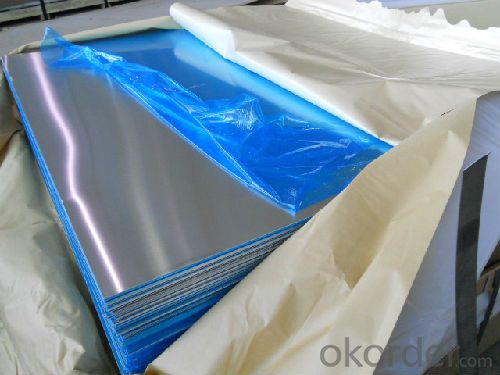
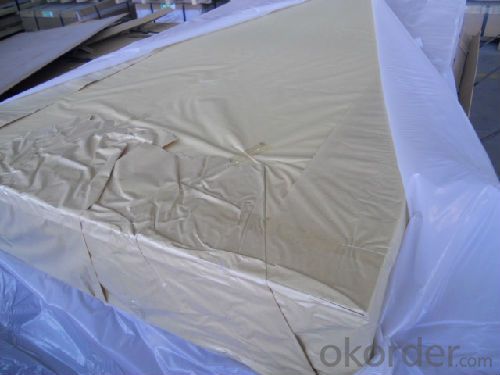
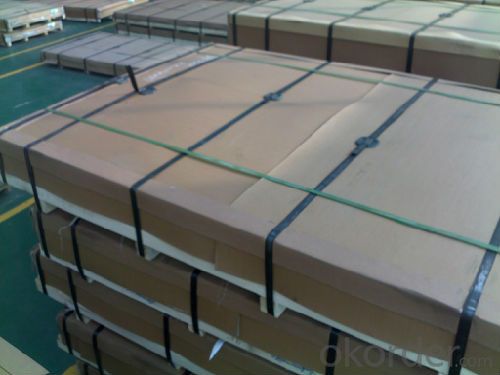
4.Specification of Aluminiu Sheets for Construciton with High Quality
Application | Alloy Type | Temper | Thickness(mm) | Width(mm) |
For Curtain wall | 1050,1100,3003,5005 | H14,H24 | 2.0~4.0 | 700~2000 |
For aluminum composite panel | 1100,3003,3005,3105 | H16, H18 | 0.15~0.8 | 1000~1500 |
For frame | 5052 | H32 | 0.5~2.0 | 500~1500 |
Hot rolled and continuous cast stock | 1xxx,3xxx,5xxx,8xxx | O,F,H | 3.0~10.0 | 1000~1500 |
Heavy Thickness plate | 6061,5052,5083,5754 | H111,H112,H38,F | 10~120 | 600~1200 |
other commons sheets | 1xxx,3xxx,5xxx,8xxx | O,H1x,H2x | 0.2~10 | 500~1500 |
5.FAQ
A.What about inspections to guarantee quality?
For each order for Aluminum Sheets, we will arrange strict inspection for raw materials, inspection during production and inspection for finished goods.
With requirement of customers, we also can arrange the third party inspection.
B.What about delivery?
We will put order for Aluminum Sheets in production schedule after order gets confirmed against copy of TT or L/C. Normally it takes about one month for production. Exact shipment schedule is different based on different sizes and quantity.
C.What is the MOQ?
5 tons for each size.
D. Where have you exported aluminium sheets?
We have exported aluminum sheets to many countries. Main markets include South East Asia, Middle East, North America, South America, etc.
- Q: Can aluminum sheets be used for air conditioning systems?
- Yes, aluminum sheets can be used for air conditioning systems. Aluminum is a common material used in the construction of air conditioning systems due to its excellent heat transfer properties. It is lightweight, corrosion-resistant, and has high thermal conductivity, making it an ideal choice for manufacturing coils, fins, and heat exchangers in air conditioning units. Additionally, aluminum sheets are easy to work with and can be formed into various shapes and sizes, allowing for flexibility in design and installation.
- Q: what's the oxidation method of positive pole on the surface of aluminum sheet?
- Do chemical polishing again, oxidation time is about 40 – 90 minutes, after finishing all of these, you can conduct positive pole oxidation, choose sulfuric acid solution in normal situation, pretreatment is very important in the whole process, take stereo as negative pole, firstly, use the solution mixed of carbonate-bicarbonate and detergent to heat and clean its surface, pretreat the aluminum sheet, dyeing according to requirement after oxidation, then remove the oxide film with oxide film removal solution, place aluminum sheet on the positive pole, finally closing it in the boiling water for about 15 minutes.
- Q: Are aluminum sheets suitable for food processing equipment?
- Yes, aluminum sheets are suitable for food processing equipment. They are widely used in the food industry due to their excellent heat conductivity, corrosion resistance, and easy maintenance. Additionally, aluminum is non-toxic and does not react with food, making it a safe and hygienic choice for food processing equipment.
- Q: What are the different types of patterns available for aluminum sheets?
- There are several different types of patterns available for aluminum sheets, including diamond, tread, stucco, and perforated. Each pattern offers unique aesthetic and functional properties, catering to various applications and design preferences.
- Q: How do aluminum plates drill?
- There are many drilling equipment for aluminium sheets,First, the engraving machine can be big or small, and can shape strange.
- Q: How to clean the aluminium oxide on the surface of aluminum? What kind of materials should we use to clean the thin aluminum sheet, and what's the concentration?
- you can answer sodium hydroxide solution, dilute acid is useless, aluminum's oxide film is very thick,as for concentration, aluminum will be passivating in concentrated sulfuric acid. if you are high school student,higher concentration is better, you can complete deoxidation by abrasive paper.
- Q: Are aluminum sheets suitable for chemical processing?
- Yes, aluminum sheets are suitable for chemical processing. Aluminum is known for its excellent corrosion resistance, making it a popular choice for applications involving exposure to various chemicals. It forms a protective oxide layer that prevents further corrosion, even in harsh environments. Aluminum is also lightweight, which makes it easier to handle and transport in chemical processing industries. Additionally, aluminum is a good conductor of heat, allowing for efficient temperature control during chemical reactions. Overall, aluminum sheets are a suitable choice for chemical processing due to their corrosion resistance, lightweight nature, and good thermal conductivity.
- Q: Can aluminum sheets be anodized with custom designs?
- Yes, aluminum sheets can be anodized with custom designs. Anodizing is a process that creates a protective oxide layer on the surface of aluminum, and this layer can be dyed or printed with custom designs before sealing, allowing for personalized and decorative finishes on aluminum sheets.
- Q: i know the 4100 is aluminum........im wondering if this one is also..
- yes it is aluminiun heads cast block
- Q: Can the aluminum sheets be used for manufacturing aircraft parts?
- Aluminum sheets are indeed suitable for the production of aircraft parts. They are a lightweight and durable material commonly utilized in the aerospace sector. With its exceptional strength-to-weight ratio, corrosion resistance, and excellent formability, aluminum is ideal for various applications in aviation. It is effortless to fabricate aluminum sheets into intricate shapes, making them perfect for manufacturing aircraft wings, fuselages, panels, and structural supports. Moreover, aluminum's high conductivity facilitates efficient heat dissipation in crucial areas of the aircraft. Consequently, aluminum sheets are widely preferred for aircraft part manufacturing due to their desirable properties and reliability in the aerospace field.
Send your message to us
Aluminum Sheets Wholesale for Construction with High Quality
- Loading Port:
- Shanghai
- Payment Terms:
- TT or LC
- Min Order Qty:
- 5 m.t.
- Supply Capability:
- 100000 m.t./month
OKorder Service Pledge
OKorder Financial Service
Similar products
Hot products
Hot Searches
Related keywords
